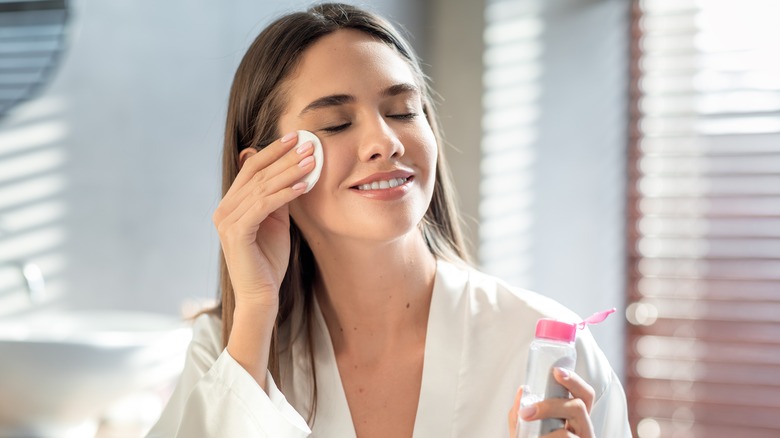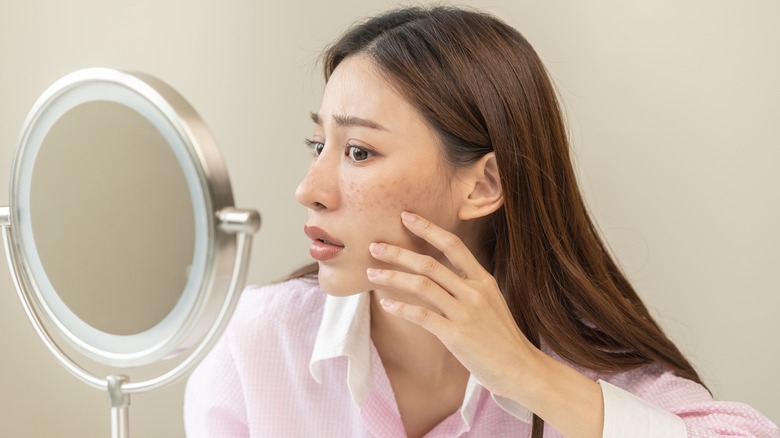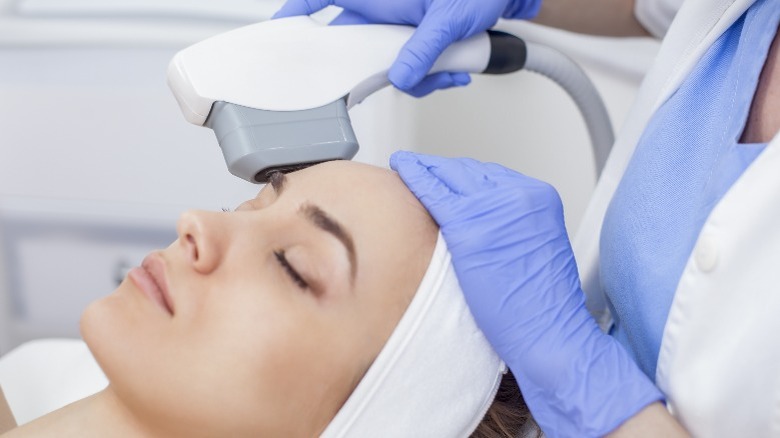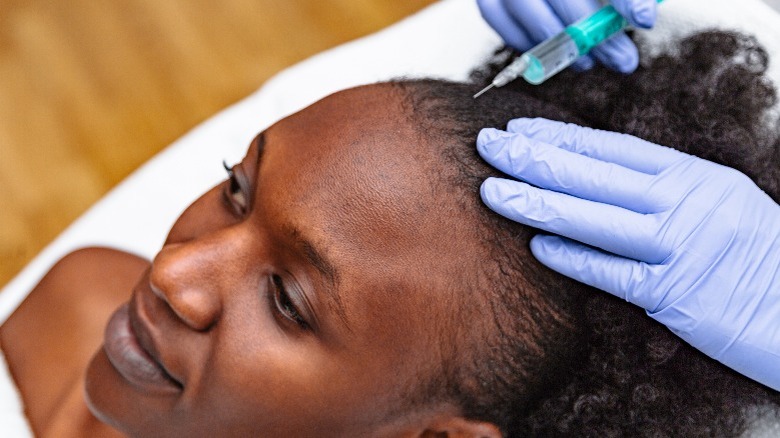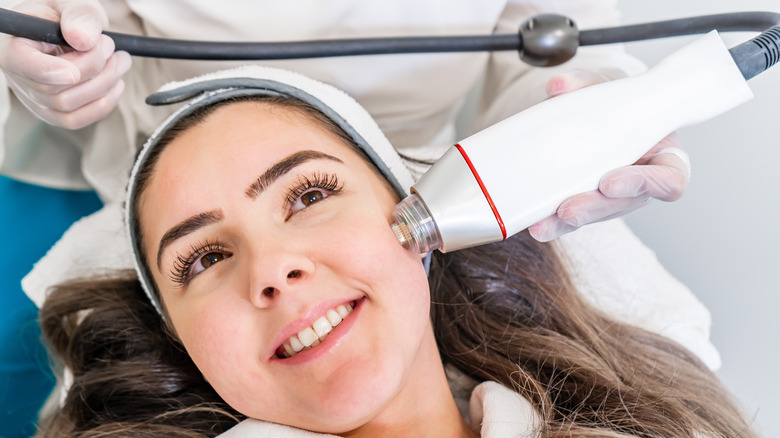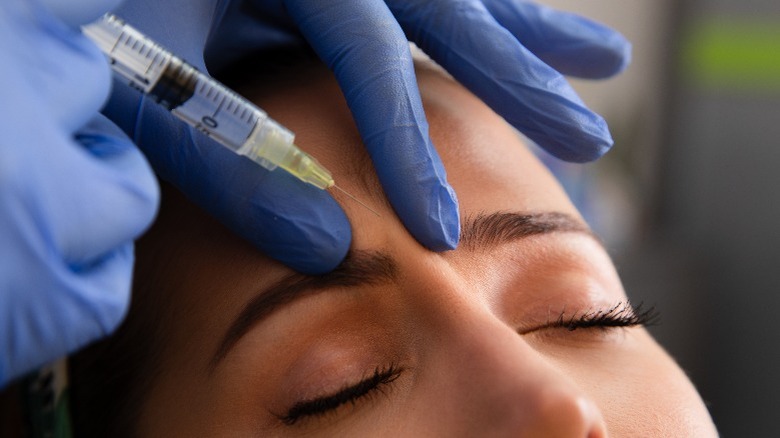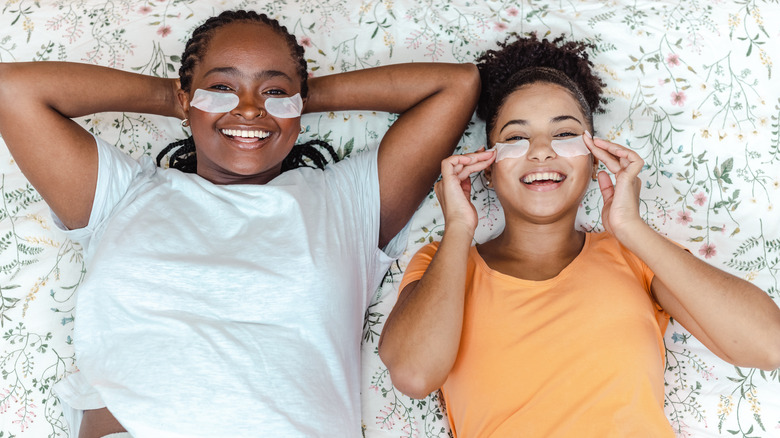Slow Skincare Trend: The Best Way To Keep Your Self-Care Routine Intentional
Slow and steady wins the race, and in the world of skincare that is definitely the case! There's no doubt that in our society, there is a significant amount of pressure placed on aging. This includes milestones of turning certain ages, entering new decades, and the realization that you've just discovered your first gray hair, or fine line. To try to defeat the effects of aging on the skin, dermatologists have been offering in-office procedures for fighting everything from fine lines to hyperpigmentation to acne scarring. For many people entering their 20s or 30s, it may seem like rushing to have in-office treatments performed is a critical must-do task for preserving the youthful aesthetic of skin. The more procedures to defeat fine lines, wrinkles, hyperpigmentation, and scarring, the better the appearance, right? Well, not exactly. Slowing down, taking deep breaths, and consciously choosing skincare can create slower routines being recommended by experts.
The in-office procedures and skincare treatment options performed by dermatologists, who are board-certified physicians with decades of specialized training and education, go beyond aesthetic measures and serve scientifically-backed purposes for preserving the health of skin, including cellular well-being, and the consensus amongst many of the expertly trained professionals who specialize in treating skin is to slow down the pursuit of procedures and make intentional skincare choices. Given the marketing of skincare treatments, particularly through social media, the pressure to pursue procedures is particularly strong. However, slower is better than rushing when it comes to your skin. Here's why.
How skin ages is the foundation of the process
Skin, which is the body's largest organ, is very different for those under age 40 than those who have reached middle age or beyond, making the procedural and treatment needs vastly different. According to the American Academy of Dermatology Association, many dermatologists agree that the best way to care for the health and longevity of skin for 20-somethings and 30-somethings is to pursue slow, more mild skincare treatments and in-office procedures than many patients may feel urged to seek. Younger skin simply doesn't have the same needs when it retains a significant amount of its natural elasticity and collagen production, so procedures for maintenance of elasticity aren't necessary since the body is doing the work for patients in their 20s and 30s.
Dermatologists are encouraging patients to begin practicing healthy skincare routines by their 20s through adopting habits which prioritize skincare as both self care and proactive health measures. Most importantly, at-home regimens should include sunscreen and solutions with SPF values applied daily to protect skin from damage caused by UVA and UVB rays, which exacerbate fine lines, wrinkles, hyperpigmentation, and cause skin cancers. Working with a dermatologist, patients can develop intentional skincare plans for slower-paced at-home practices and consciously chosen procedures. Though the skincare market can be overwhelming with products and advertising, making intentional and well-informed decisions about the benefits of prioritizing wellness through slower skincare will result in healthier skin and better results in the long run.
Intense pulsed light (IPL) therapy can manage subtle skin conditions
Since 20-somethings and 30-somethings are unlikely to have severe fine lines or wrinkles, more invasive in-office dermatology procedures are no longer being recommended for patients under 40. WebMD reports that in place of previous procedures involving unnecessary intrusion, non-invasive in-office treatment options like intense pulsed light (IPL) therapy are being promoted for controlling hyperpigmentation and discoloration, acne scarring, and the emergence of very subtle fine lines. Also called photofacials, the innovative treatment option negates the need for surgical interventions to even skin texture and unwanted correct color variations, particularly from acne, scarring discoloration, and dark spots. IPL therapy, which must be administered by a dermatologist due to its strong concentration of light energy, which is notably higher in intensity than laser treatment devices, can mitigate discolored skin through the utilization of selected wavelengths to eradicate areas of unwanted pigmentation.
Through heating skin cells which are pierced through the epidermis — the skin's upper layer — photofacial procedures are able to kill cells of various shades without requiring surgical incisions, thus making the treatment method for correcting noticeable hyperpigmentation from scarring, sun exposure, and acne-prone areas an excellent option for younger patients whose skin conditions can be controlled without invasive trauma to tissue, per UPMC. Slowing down skincare and making courses of treatment more intentional, IPL therapy sessions are generally recommended at least a month apart and each target area takes approximately six months to resolve. Sunscreen is especially important post-photofacials.
Choose biostimulating fillers for fuller features
After age 20, approximately 1% of skin's collagen is lost per year due to a combination of environmental and natural factors, increasing popular filler treatments, reveals Rejuve Medspa. Dermatologists are urging patients in their 20s and 30s to move towards biostimulating fillers for multi-purpose effects which promote natural processes within skin tissue, delivering more efficient results and increasing longevity of collagen. Biostimulating fillers have been spearheaded by Sculptra, an innovative filler solution which counteracts the damage of free radicals, ultraviolet exposure, and natural thinning of skin. For most patients, especially those under age 40, dermatologists are encouraging the choice of Sculptra over dermal filler predecessors due to the way that Sculptra's biostimulating active ingredient poly-L-lactic acid (PLLA) bonds with skin tissue beneath the epidermis to encourage the body to manufacture its own production of collagen. This boosts natural collagen rejuvenation regardless of age, providing a more organic way to obtain the filler aesthetic while keeping skin intrinsically elastic and resilient.
While traditional dermal fillers rely on hyaluronic acid and other solutions to produce temporary plumping of skin, biostimulating fillers like Sculptra with PLLA actually create lasting effects within the skin's tissue. The bonding of PLLA to instigate the skin to produce enhanced collagen, younger patients who routinely pursue fillers with biostimulators are going to experience skin with fewer fine lines, wrinkles, thinning, and evidence of damage from pollutants and UV rays than peers who don't begin biostimulating fillers in their 20s or 30s.
Microneedling is steady but mighty
A highly recommended in-office procedure for patients to begin scheduling regularly in their 20s and 30s is microneedling, which produces increasingly lasting and more effective results when conducted rhythmically over time, says SkinKraft. Microneedling is known as the original collagen production procedure and shares similar collagen-provoking results as biostimulating fillers like Sculptra. By puncturing micro-wounds into the skin, the procedure encourages skin tissue to repair itself by increasing its own collagen production. During microneedling sessions, a dermaroller tool consisting of multitudinous millimeter-length thin needles covering a rolling head atop a device rolled across skin creates a mechanism designed to puncture the epidermis through numerous miniature wounds. Dermarollers with longer needles can penetrate layers of skin tissue beneath the top layer, provoking collagen development within deeper tissue. For more vigorous results, radiofrequency microneedling devices are becoming popular in-office selections for their addition of various radiofrequencies directed into dermaroller puncture wounds, reports Healthline. Microneedling's visible results take time to appear, but commencing sessions of the treatment early on will keep skin plump by reducing natural age-related collagen loss, and mitigating pollution-induced collagen damage.
Be mindful if you choose to use at-home dermarollers as DIY tools lack medical-grade sterilization which professional dermarollers are guaranteed to have undergone prior to the needles of the device puncturing skin. Since sterilization prevents infection and bacteria from entering skin through the hundreds of small incisions created by dermarollers, keep in mind that DIY kits don't have the same levels of safety.
Botox and injectable procedures should be paced
Perhaps the best known in-office skincare treatment is Botox, otherwise known as Botulinum Toxin, which is used to temporarily reduce the appearance of fine lines, wrinkles, and texture indents caused by pitting and acne scarring, according to Cleveland Clinic. There are some age regulations restricting teenagers from obtaining the treatment due to the chemical solution and potential side effects, but the treatment for firming skin on an intermittent basis is safe for patients in their 20s and older, though the procedure is typically not recommended for use in full strength until patients are in at least their 30s.
Rather than relying on Botox as a counteractive measure once fine lines have developed, younger patients are increasingly recommended to explore a preemptive version of the injection-based treatment colloquially called Baby Botox, reveals Dr. Michele Green, MD. Otherwise known as Preventative Botox, the same Botulinum Toxin solution is injected into areas known to produce fine lines and wrinkles, ultimately keeping the development of indentations and other age-related skin changes at bay. Baby Botox injections can stop the formation of fine lines at the first sign of their appearance while preventing future lines, a manufactured result in alignment with its preventative namesake. Baby Botox injections are suggested for patients aged 25 and older, though younger patients may choose to undergo the treatment after consulting with a dermatologist. Pursuing Preventative Botox prolongs the use of the treatment, but leads to the slower development of unwanted skin degradation.
Say goodbye to stress and hello to healthy skin
A different type of method for reducing skincare concerns can be found in the rising popularity of mindfulness practices, many of which are praised for their ability to maintain focus on the present moment and calm anxiety, stress, and other hormone-induced states prone to causing acne breakouts and the early development of fine lines, with stress being called a beauty thief, says Everyday Health. When an adult continues to experience an enduring battle against acne, research-backed connections between stress-related hormones such as cortisol and corticotropin-releasing hormone (CRH) cause inflammation in the body and within the skin, resulting in breakouts. Though adult acne can have other underlying causes, stress is an experience that everyone is susceptible to experiencing, which can rob one of beauty, joy, and more.
Calming your stress through deep breathing and relaxation of your body, mind, and emotions can lead to positive effects on your skin and help you create slower, more present skincare practices rooted in appreciation for your skin rather than stress over perceived imperfections. Conscious, intentional efforts to remain focused on the present moment, especially during your morning and evening skincare routines, can help cultivate slow-paced skincare regimens centered in love for your skin and a genuine desire to take the best possible care of it. Just as a dermatologist specializes in skin, look for a mindfulness coach, teacher, or class in your area to help you develop a personalized practice, or search for guided videos.
Consistency and consideration are core elements of slow skincare
In short, slower skincare is a mindset focused on practicing taking care of one's skin as early as possible, but especially with an emphasis for 20-somethings given the decrease of collagen by full percentage rates each year after age 20. Slower skincare routines are promoted for use by those in their young professional years as a way to begin thinking about the benefits of various in-office and at-home procedures to keep collagen production ongoing and reduce the amount of skin damage from UV rays, pollutants and free radicals, particularly as decline in air quality becomes a global issue. The pillars of slow skincare are additionally intersectional with clean beauty as cosmetics shift towards becoming more environmentally conscious, utilizing the inclusion of ingredients free from parabens, preservatives, and other harmful chemicals, the atmosphere of skincare is settling into intentional selection and use.
Be intentional with your treatment and procedure pursuits if you're under 40, including when considering the financial amount you invest in products and curbing purchasing of unnecessary products, advises K-Beauty Muse. Especially as young adults are building careers, income, and savings, there's no need to spend lavish amounts of money on procedures that aren't going to be as effective on their skin as the same procedures would be on older patients. Remaining calm, focused, and intentional on the choices you're making in your skincare routine, regardless of your age, is the one steadfast rule of slowing your skincare routine.
